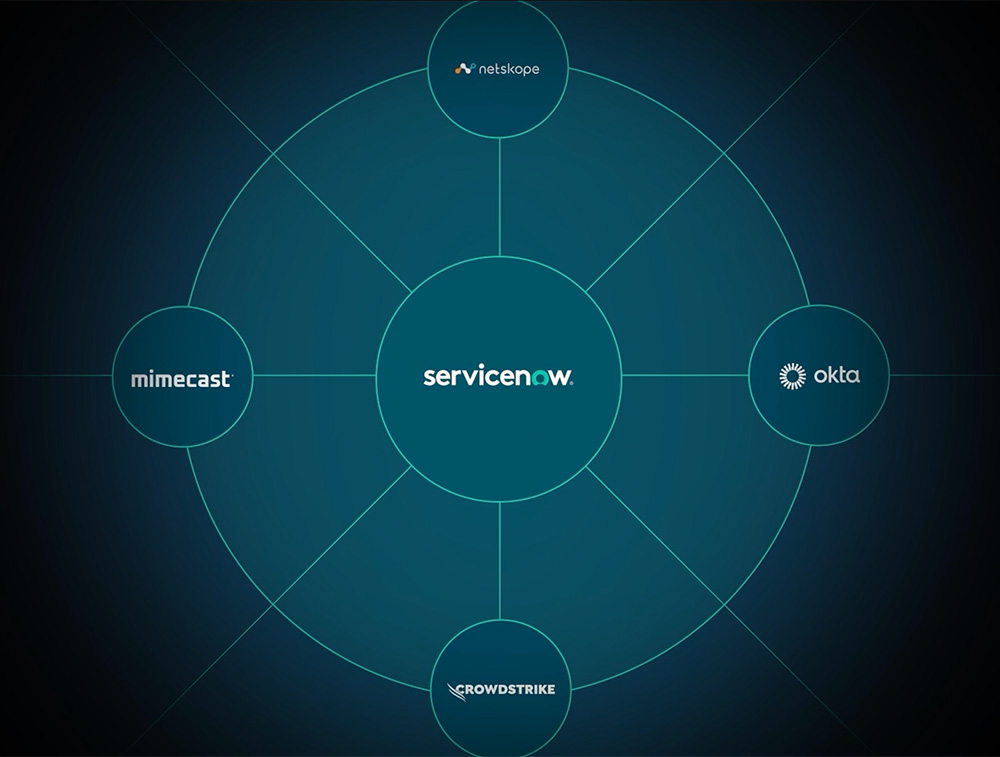The security integration trap:
When tools talk but don't listen

Every day, enterprise security teams face a flood of notifications from disparate tools. The struggle to turn scattered alerts into coordinated action often leaves them overwhelmed. The technology is constantly talking, but is your team listening and responding with coordinated action?
Despite investing in best-of-breed security solutions, organisations often find themselves with many tools operating in isolation, creating more noise than actionable intelligence. According to the 2025 State of Security Report, 78% of organisations say their security tools are “dispersed or disconnected,” with 52% of security professionals experiencing alert fatigue and operational stress.*
This fragmentation creates gaps that attackers exploit, increasing business risk while compromising operational resilience.
The integration illusion:
Why connected tools aren't enough
Organisations deploy specialised point solutions to protect endpoints, email, cloud applications and identity access. Each tool is effective within its domain and exchanges data with other systems.
However, integration often only enables systems to communicate with each other. What’s missing is the centralised orchestration – the ability to work together toward unified business outcomes.
Too often, the solution gets lost in translation:
- Security teams speak the language of vulnerabilities, threat indicators and access logs.
- Business teams think in terms of service tickets, priority workflows and operational impact.
Without a common language, critical security insights become just another flashing light in an endless stream of notifications.
However, if your organisation uses ServiceNow for business operations, you already have the foundation for security orchestration embedded in your workflows.
ServiceNow bridges
the business-security divide

ServiceNow offers a unique advantage in security orchestration. Your IT and business teams already understand its interface, trust its processes and rely on its coordination capabilities. Rather than learning another platform for security, ServiceNow enables you to embed security into workflows your people already understand and use.
The platform provides not just an orchestration mechanism, but a common language, communication pathway and workflow that unifies security as part of the broader business processes. This shared vocabulary eliminates the translation barrier.
When ServiceNow acts as the orchestration layer, security alerts become business incidents that trigger appropriate action, follow-up, reporting and accountability.
A little less conversation,
a little more action
True security orchestration delivers more than simple integration. When properly configured, your security tools work together through ServiceNow to create actionable insights in an automated and repeatable way.
Consider how ServiceNow orchestrates responses across your security ecosystem:
CrowdStrike threat detection
Creates priority incidents, notifies teams and tracks remediation through completion, reducing response times and limiting business impact.
Mimecast
email security
Assesses broader implications and initiates targeted user awareness communications to proactively reduce phishing risks.
Netskope cloud protection
Security insights automatically inform data governance processes and compliance workflows, strengthening data protection.
Okta identity and access management
Identity events coordinate with HR systems for employee lifecycle management, enhancing access controls and reducing insider risk.
This orchestrated approach delivers visibility that leads to action, insights that drive outcomes and security that supports rather than impedes business operations.
Teams respond faster, analysts spend less time on manual coordination and security becomes embedded in business processes rather than operating as an isolated function.
ServiceNow orchestration
builds on what you already have
Many organisations have different combinations of security tools, legacy systems or hybrid environments. ServiceNow integrates with the best-of-breed tools you’ve already deployed to create orchestrated workflows.
At CSO Group, we work within each customer’s existing landscape to unlock the value from existing investments to deliver more effective cyber security outcomes. Not all customers will have an ideal reference architecture readily deployed, and that’s where modularity becomes important. Organisations can evolve their security orchestration gradually, starting with critical integrations and expanding over time.
Security integration is necessary, but orchestration represents the next evolution.
The benefits are measurable: reduced manual processing, faster incident response, improved analyst satisfaction and security operations that align with business priorities.
Ready to turn disconnected security alerts into coordinated business action? Connect with CSO Group at the ServiceNow World Forum on 24 July, or speak with our experts.

Hank Clark is Chief Strategist at CSO Group, Australia’s trusted cybersecurity partner, specialising in integrated security outcomes through carefully orchestrated vendor technologies. Learn more at csogroup.com.au